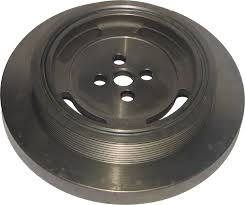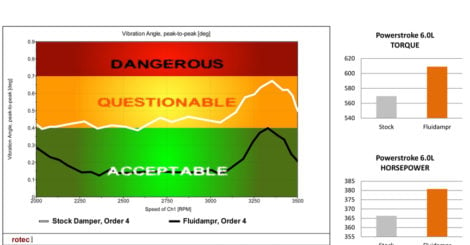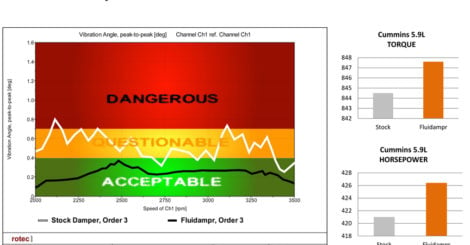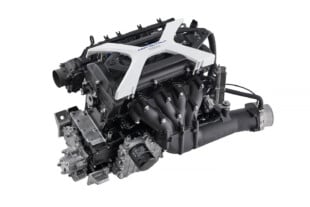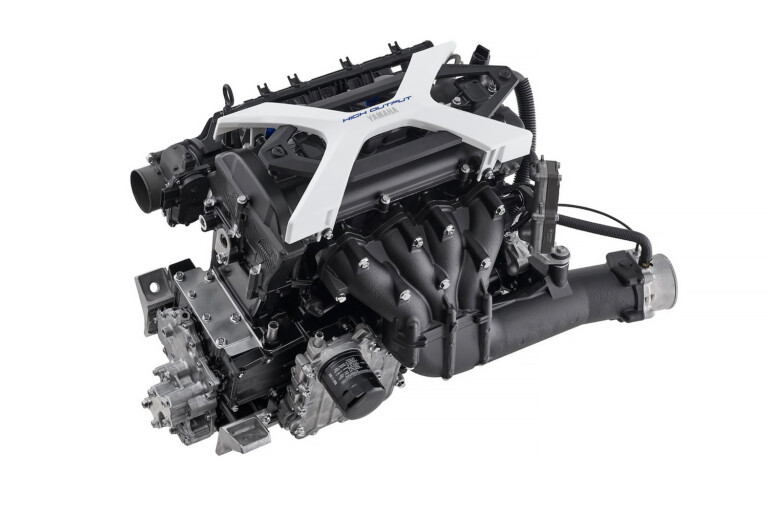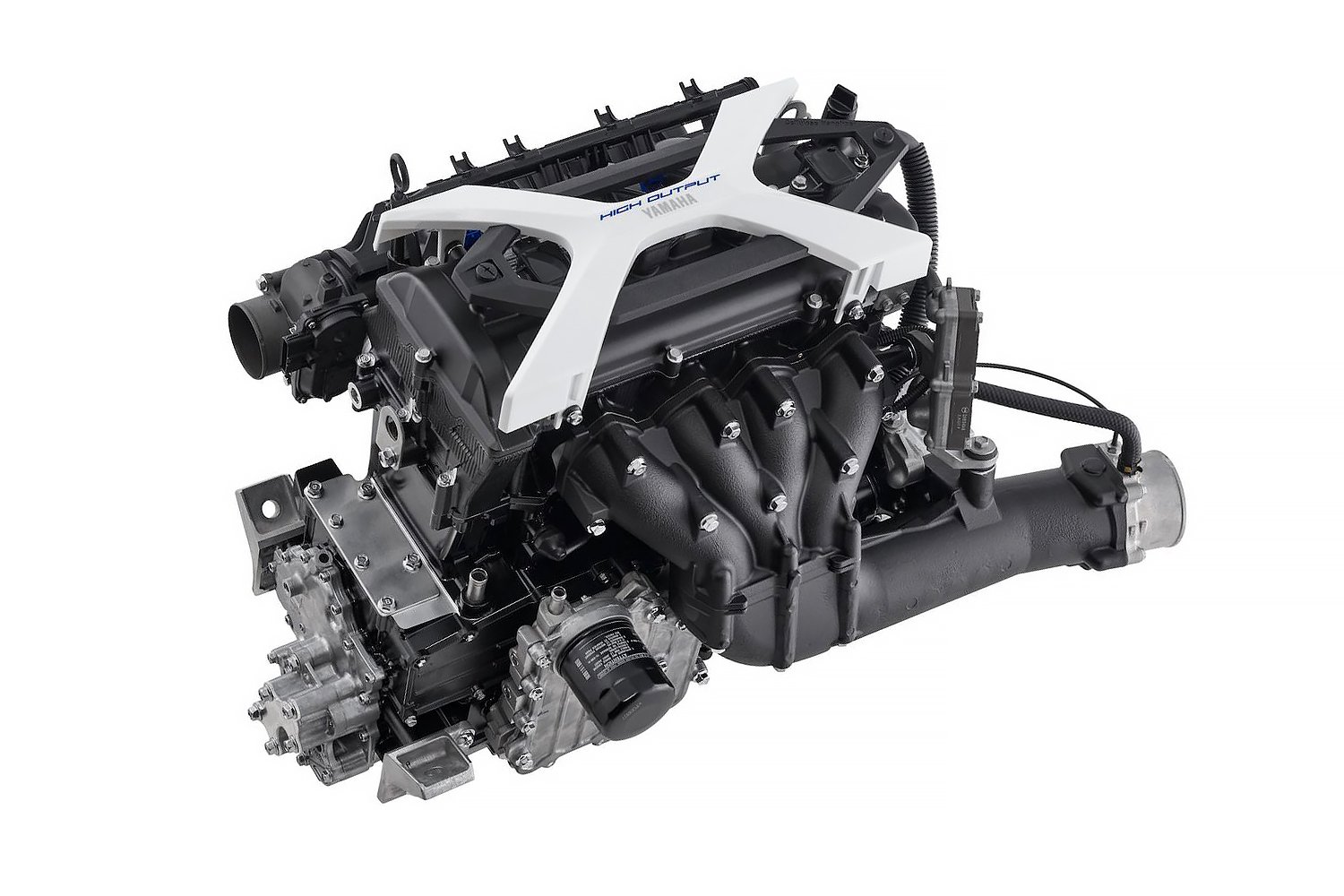The How It Works series is meant to take a deep dive into a specific product to give you the best understanding of what is really going on, how it works, and why it works. In this month’s article, we tackle viscous crankshaft dampers, also known as harmonic balancers by turning to Brian LeBarron and his team of experts at Fluidampr. While nearly every engine today runs one, most people don’t really know how they work or when to upgrade them.
Steady RPM, is there such a thing?
Whether you have thought about it or not, there is no such thing as steady RPM in a piston driven engine. “I can hold my engine at 2,000 rpm’s and my tach doesn’t move” you say. Steady RPM is relative. The slower you observe things, the steadier they appear. If you only look out your window once a day, say at 12 pm, you could conclude that the sun is always directly overhead. However, if you look out the window more frequently, then you would see the sun isn’t always in the same spot. The same is true with your engine. If you only look at the rotational speed every minute, you can probably average right around 2,000 revolutions per minute. If you look at rotational speed every second, you may still find that the rotational speed is roughly the same. At a hundredth of a second, you will notice the crank shaft speeding up and slowing down but it really isn’t until we dive down into the thousands of a second or faster that we can see the speed changes of the crank shaft.
What is causing this unsteady RPM?
As each combustion event happens, the rotational speed increases. But, as the combustion event ends or slows down, the rotational speed slows down. There is this constant speed up and slow down happening as an engine is running and the more cylinders the engine has, the more frequent this happens but with a less dramatic of an effect. An engine with fewer cylinders will have less frequent speed up events, but they will be more dramatic.
Harmonics
Harmonics can be thought of as pitches or frequencies. For example, if you have ever heard a wind chime made out of little metal tubes, then you have heard the difference in noises the different tubes make. These noises sound different because they are at a different frequency and we can only hear a relatively small range of frequencies. There are frequencies much lower than we can hear and much higher than we can hear. Therefore, we use instrumentation to pick up these frequencies and report what they are. Just because you cannot hear something, doesn’t mean there isn’t a frequency associated with it.
In an engine, there are a lot of things going on and pretty much everything is emitting a frequency. Since this article is focusing on engine harmonics, lets limit our focus on the rotating assembly of the engine. The rotating assembly for most engines is comprised of a single crank shaft, one rod per cylinder, two rod bolts per rod, one piston per cylinder, multiple rings, one piston pin per piston, and two snap rings to hold the pin.
When assembling an engine, all OEM’s and most engine builders will balance these components to move the center of mass to the center of the rotational axis (essentially, when you spin the crank, the crank doesn’t feel any forces other than rotation). That being said, there are two types of balancing: internally balanced (meaning the rotating assembly is balanced without the use of an external balancer or flywheel) and externally balanced (meaning the balancer and/or flywheel have counter weights to help neutrally balance the crank). No matter which type of balancing, it is almost impossible to get the rotating assembly 100% neutrally balanced. The last engine we had balanced was off 0.28 grams in the front and 0.24 in the rear (which is pretty good overall).
 Having a rotating assembly balanced is only part of the story. If there was nothing going on inside of an engine and all it did was spin, then having a balanced assembly would be good enough. But, engines are only useful if they are producing work or power. To create the power that we yearn for, we compress air, add fuel, and wait for combustion! The act of compressing air puts an external force on the crank although this force is mild compared to the combustion which follows. Combustion not only puts an external load on the crank like the compression (just MUCH larger), but the force is so great that the crank actually elastically deforms (bends and twists, but fully recovers after combustion) each time combustion happens (like a rubber band).
Having a rotating assembly balanced is only part of the story. If there was nothing going on inside of an engine and all it did was spin, then having a balanced assembly would be good enough. But, engines are only useful if they are producing work or power. To create the power that we yearn for, we compress air, add fuel, and wait for combustion! The act of compressing air puts an external force on the crank although this force is mild compared to the combustion which follows. Combustion not only puts an external load on the crank like the compression (just MUCH larger), but the force is so great that the crank actually elastically deforms (bends and twists, but fully recovers after combustion) each time combustion happens (like a rubber band).
To help minimize the deformation, main caps are used. These “mains,” help to reduce the leverage and greatly reduce the amount of twist and bending that the crank experiences. If there was only a front and rear main, the crankshaft wouldn’t make it through a full dyno run. There would be so much deformation that the front and/or rear main would give way resulting in a catastrophic failure.
Each time there is a combustion event, all of this twisting and bending happens. Assuming we are only focusing on four stroke engines, an eight cylinder engine deforms at least four times per rotation (three times for a six cylinder). “It is the end-to-end twist and rebound of the crankshaft created by internal combustion that creates the harmonics,” said Brian LeBarron, Marketing Specialist for Fluidampr. “The combustion process exerts a whole lot of force around each crank web. It is going to actually twist the metal ahead of itself. Just like a spring, it will snap back and that is what creates these torsional vibration or harmonic frequencies that travel back and forth through the crankshaft.” These harmonics, if kept under control have very little effect on the main bearings and other components because they are designed to work within a certain range of harmonics. If not kept under control, these harmonics can have tremendous effects on the main bearings and surrounding components.
If these frequencies get close to the natural frequency of the assembly, then the wear on the components increases tremendously. (The natural frequency is the frequency that will resonate throughout the assembly almost uncontrollably; usually causing tremendous oscillation and eventual failure.)
Fluidampr worked with Bully Dog to check the levels of the major three OEM engines a few years ago. Not surprising, the factory Duramax crankshaft experiences extremely dangerous harmonics. This is certainly a contributing factor to the crankshaft breakage issue the Duramax engines experience.
So, how does my engine survive?
Whether you are aware of it or not, there are a few things going on to control these frequencies. First, all OEMs use a damper on their engines. There are different types (discussed later), but they will all have some sort of device that reduces harmonics. Another key component assisting in managing the harmonics would be the remaining drivetrain components. Flywheels (especially dual mass flywheels), torque converters, clutches, and transmissions all have a fair amount of mass that rotates along with the engine. This mass helps to reduce the harmonics by absorbing some of the energy that is producing the harmonics in the first place. As each of the combustion events happen, the harmonics are dampened by this additional rotational mass.
Damper or Balancer?
In the purest sense of the word, a balancer only has counter weights to balance the rotational assembly. Therefore, an externally balanced engine (like the Power Stroke and Duramax) uses weights on the flywheel in back and on the balancer in the front. The flywheel could be considered a balancer too as LeBarron added, “they are essentially the same thing.” Balancers have been integrated into dampers. A key function dampers play, is to dampen the torsional vibration (as LeBarron alluded to earlier). So, adding the needed counter weights to balance the engine simplified the process on an externally balanced engine.
There are basically two types of dampers available today. “There is a tuned elastomer and a viscous design,” said LeBarron. In the everyday consumer world the most common type of damper is an elastomer type.
Elastomer Dampers

This is an example of an elastomer damper. Notice the main hub in the center has a thick black ring around it and then the outer pulley. The thick black ring is the elastomer. On the bottom, connected to the pulley is the inertia ring. The 4 holes are for balancing.
The basic stock elastomer damper has a hub that is connected to the crankshaft and some sort of elastomer (usually a rubber compound according to LeBarron) bonded to this hub. Bonded to the outside of the elastomer is an inertia ring which is a thick heavy ring with a specific amount of mass (designed specifically for the engine it is going on). As the engine rotates, the whole assembly rotates as one unit. When a combustion event happens and these harmonics reach a set narrow frequency, the inertia ring resonates on the elastomer causing it to twist and rebound in response to the speed of the rotating assembly. The motion of the damper mass reduces the small band containing the worst harmonics.
The elastomer deforms during this event. The part of the elastomer connected to the hub, speeds up with the hub and the part of the elastomer connected to the inertia ring moves the slower speed of the ring. The difference in these two rotational speeds is the amount of energy that is being put into the elastomer.
Viscous Dampers, A.K.A. Fluid Dampers
The other common type of damper is a viscous damper. A viscous damper has a sealed outer housing with a precision machined hub. Inside of the housing is an inertia ring with a viscous fluid (Fluidampr uses specialized silicone) filling the cavity.
The silicone the Fluidampr uses is extremely thick. See how the silicone folds back and forth on itself almost like a ribbon. If you do this with oil or most other lubricants, it just pools at the bottom.
To really understand what is going on and how a viscous damper works, we need to first explain what shear is. Shear itself can be described as the normal force resisting movement. In fluid mechanics, shear (τ) is equal to the viscosity (μ) multiplied by the change in velocity per distance (τ = μ*[dv/dy] ). While you don’t necessarily need to understand what this equation is, it is important to take away a few key points. First, the greater the viscosity the greater the shear force and secondly, as the change in velocity increases, so does the shear force (note, it is the rate of change in velocity, not the velocity itself).
With a viscous damper, the hub and outer ring are moving with the crankshaft since they are directly connected to it. The inner fluid and inertia ring are moving only because of the shear force. As the crank rotates, the shear force is great enough to keep the fluid and inertia ring still relative to the outer ring (meaning everything is rotating at the same speed). As a combustion event happens, the harmonics oscillate the outer ring. The frequencies of these oscillations are high enough to create a rapid change in velocity which causes the free rotating internal inertia ring to be at a different speed than the outer ring. The fluid in-between the inertia ring and outer ring experiences a shear force that opposes the harmonics and helps to dissipate the harmonic energy as heat.
The silicone we use is on average 45,000 times thicker than 30 weight oil – Brian LeBarron
“The problem comes in when you start doing performance modifications to the engine. Anything that is going to add more power to the system or change the composition of the rotating assembly [rebuilding an engine with oversized pistons, upgrading the pistons and/or rods, etc] is going to compromise the stock elastomer damper. If you add more torque, it is going to start over working the rubber. Additionally, if you change the rotating assembly you will likely fall outside of the range that the damper is tuned for, which doesn’t leave you with much protection.”
With a fluid damper, the shear forces are acting anytime the crank is rotating. Once the harmonics get above a level to create a difference in rotational speed between the inertia ring and the outer ring, the damper is damping (which is most of the time). As a result, Fluidampr claims a viscous damper will effectively control destructive torsional vibration through the entire RPM range of the engine, not just a specific range. Viscous dampers aren’t tuned for a specific narrow band frequency. Because the inertia ring can freely rotate through the housing, it isn’t limited by the elasticity of the rubber.
If they are that good, why aren’t they standard on all OEM engines?
 Production of any mass produced item usually comes down to trade off’s. One of the biggest tradeoffs is cost vs. quality. If you can design a part to work with something that is cheaper, then you design it for something that is cheaper. When durability matters more, then you spend more. Such cases are often found in industrial applications. Many OEM’s for heavy duty diesel engine use viscous dampers because these machines power our economy and are subjected to very harsh conditions and are relied upon for business. Breaking or down time must be minimized.
Production of any mass produced item usually comes down to trade off’s. One of the biggest tradeoffs is cost vs. quality. If you can design a part to work with something that is cheaper, then you design it for something that is cheaper. When durability matters more, then you spend more. Such cases are often found in industrial applications. Many OEM’s for heavy duty diesel engine use viscous dampers because these machines power our economy and are subjected to very harsh conditions and are relied upon for business. Breaking or down time must be minimized.
Companies like Fluidampr manufactures their dampers to a higher machining and balancing tolerance than OEM specs. In addition, their performance diesel line of dampers are all SFI certified for competition use (spun up and held at 12,500 rpms for at least one hour).
Over the years, light truck manufacturers have constantly scoured over their costs to produce a vehicle trying to pull out every last penny. For the mass produced vehicles from two of the big three, the cost doesn’t warrant the investment.

Each component of Fluidampr’s viscous damper is precision made. Here a laser is cutting the housing covers.
So, who can benefit from them?
Anyone who values the long-term durability and efficiency of their diesel truck’s engine can benefit from upgrading their stock damper to a Fluidampr Performance Diesel damper. Even under stock conditions, Fluidampr told us tests have shown Fluidampr to reduce torsional vibration and unleash torque and horsepower throughout the rpm range that were being lost to unnecessary vibration.

Unlike a stock OEM damper, Fluidampr’s dampers don’t seem to deteriorate in storage. Above is the test results from Harry Luzader’s damper that had been in storage for over 25 years. Notice the sharp reduction in vibration amplitudes.
For the performance guys, yes, you should look at upgrading your stock damper to a performance damper early in the process. The increased performance means more force pushing down on the piston which creates more deformation within the crank and greater harmonics. These increased harmonics can easily start getting into a range that can lead to damage. As LeBarron mentioned above, increased torque can overwork the factory damper.
Things to look for if you have a stock damper
The biggest tip we tell everybody is to periodically check the harmonic balancer.- Brian LeBarron
Final thoughts
This is probably one of the easiest components to overlook. Not only is it out of sight most of the time, but none of us really think about harmonics as we try and lay down that big number or pull ahead of the guy next to us. We all work our trucks in various ways and never really think about harmonics. Hopefully this How It Works article changes that.
Let us know what you think!




